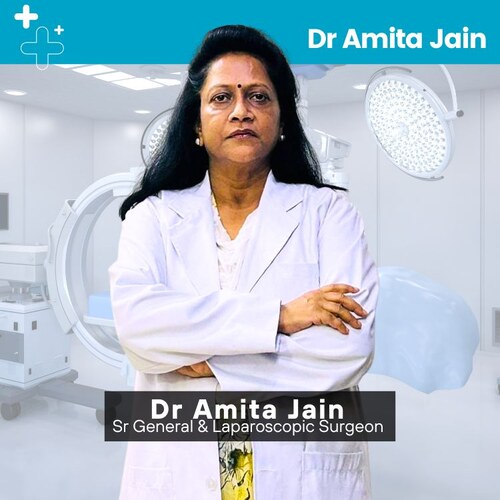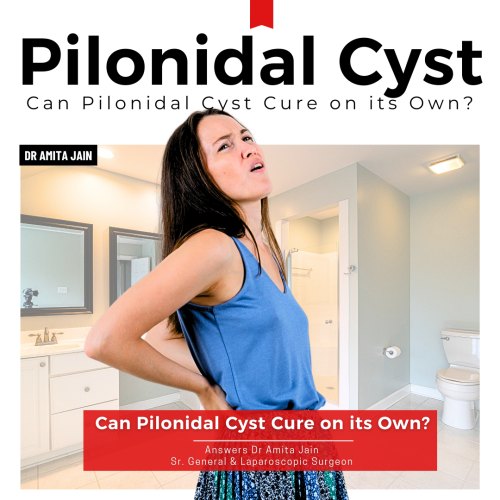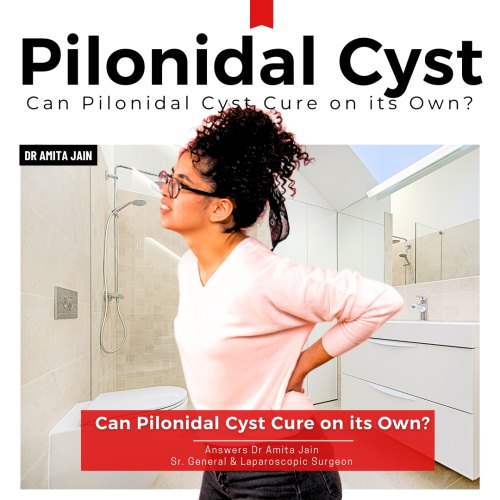Health is something that one must never ignore. No matter how busy you are, taking care of your health can never be a second thought. If diseases are left untreated, then they can become fatal. Pilonidal sinus is one such condition. It starts as a seemingly harmless cyst near the tailbone but can quickly escalate into a painful, recurring problem that disrupts daily life. But can these cysts heal on their own, or do they require medical intervention? Answers Dr Amita Jain, a top general and laparoscopic surgeon and one of the best doctors for pilonidal sinus treatment in Delhi and India.
What is a Pilonidal Cyst?
A pilonidal cyst is a small tunnel or cavity that forms in the skin at the top of the buttocks, near the tailbone. It develops when hair and debris become trapped in this area, leading to infection and inflammation. This condition can range from being asymptomatic to causing severe pain, swelling, redness, and the discharge of pus or blood.
Pilonidal sinuses are more common in young adult males and tend to recur frequently. People who sit for long hours, such as office workers or drivers, are at a higher risk of developing them. While some cases remain mild, treatment is usually required if an infection occurs.
Can these Cysts cure on their own?
This is perhaps the most important question. The answer lies in the following facts:
- When the cyst is small and does not cause major discomfort, then it may resolve on its own, provided proper hygiene and cleanliness is maintained.
- When the cysts keep coming back, medical intervention is the only solution.
- When infection occurs, then medical treatment is the only option.
- When the infection becomes severe and turns into a painful abscess (pockets of pus), it require immediate medical attention.
Home Remedies for Pilonidal Cyst
Good Hygiene
- First and foremost, maintain good hygiene. A pilonidal cyst, also known as a pilonidal sinus, develops when an unnatural channel forms in the skin at the top of the buttocks. This can lead to the accumulation of dirt, dead cells, oil, and bacteria, potentially causing an infection. Wash the area daily with mild soap and warm water. Keep it clean and dry to prevent bacterial growth.
- Avoid oils or herbal products
- Gentle scrubbing during cleansing helps remove dead skin cells, reducing the risk of them entering the pilonidal sinus.
- Always take a shower immediately after activities that cause excessive sweating such as exercise or spending time in hot environments.
- Wear loose-fitting clothes to avoid any irritation of the cyst.
Warm Compress Therapy
Applying warm compresses to the affected area can provide relief and help manage pilonidal sinus without surgery.
- Increases blood circulation to the area, promoting healing.
- Reduces inflammation and swelling.
- Encourages natural drainage of accumulated pus.
- Relieves pain and discomfort.
How to Apply a Warm Compress?
- Soak a clean cloth in warm water.
- Wring out excess water and ensure it is not too hot.
- Place the warm cloth on the affected area for 10-15 minutes.
- Repeat this process several times a day.
Sitz Bath
Soak in a warm sitz bath with 3-4 spoons of Epsom salt for 20 minutes to drain pus, relieve pain, and promote faster healing of an infected pilonidal cyst.
Avoid Sitting For Long Hours
Sitting for extended periods puts pressure on the tailbone area, increasing the risk of flare-ups.
- Take breaks: Stand and move every 30-60 minutes to reduce tailbone pressure and prevent cyst formation.
- Use a cushion: A cushioned seat or ergonomic chair eases strain on the coccyx.
- Maintain posture: Sit properly to minimise friction.
- Stay dry: Avoid sweat buildup in the natal cleft to lower infection risk.
Conservative treatment
If a cyst is diagnosed early and isn’t causing severe pain or inflammation, a broad-spectrum antibiotic may be prescribed to reduce infection and discomfort. While these antibiotics target various bacteria and ease inflammation, they do not eliminate the cyst itself.
Do not hesitate or even think twice before consulting a doctor if you feel your cysts are hurting you. While home remedies such as good hygiene, warm compress, taking a sitz bath, avoiding prolonged sitting, and conservative treatment may provide temporary relief, you need to look for a long-term solution. Let’s not ignore our symptoms and seek medical attention as and when required.

Dr Amita Jain is one of India’s most distinguished and experienced female surgeons, known for her unmatched expertise in general and laparoscopic surgery. With over 29 years of surgical excellence, Dr Amita Jain has built a reputation for precision, compassionate care, and advanced surgical techniques.
Dr Amita Jain has successfully performed a wide range of complex general surgeries, including both open and minimally invasive procedures, with a strong focus on trauma care, onco-surgical techniques, and reconstructive surgeries. Her areas of specialisation include (including Gallbladder stone removal, appendix removal, hernia repair surgery, piles and fissure surgeries). She was the Professor of Surgery at the Army College of Medical Sciences and Base Hospital, Delhi Cantt. In 1994, she was commissioned asa Surgeon under the United Nations Mission in Congo. From 2020 to 2022, she worked with Bansals Hospital. Currently, Dr Amita Jain is the Senior General and Laparoscopic Surgeon at Rainbow Children Hospitals (Malviya Nagar, Delhi), Artemis Lite: Multi-Speciality Care Hospital (New Friends Colony, New Delhi) and at Rosewalk – Luxury Maternity Hospital in Delhi (Panchsheel Park, Delhi)
Call Us at +(91) 882-6615301

